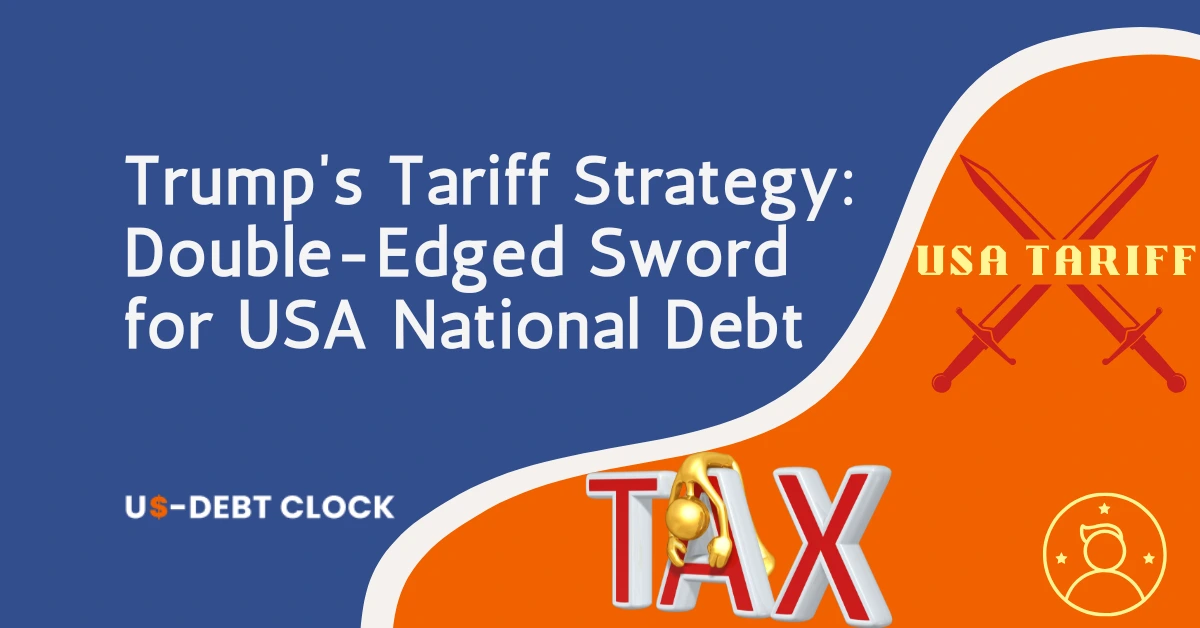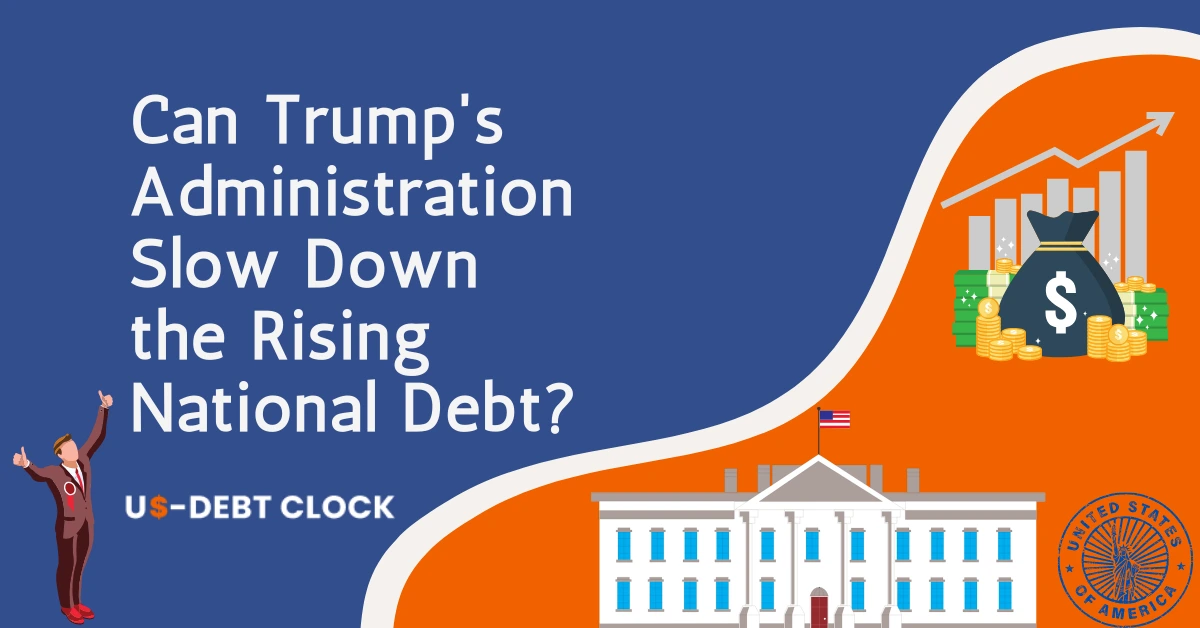Every year, US taxpayers pay billions of dollars to compensate for the efficiency of the US government. What if some of this money could be saved and invested in health and education? Thatâs where the Department of Government Efficiency(DOGE) comes in.
In a world where time is money and every dollar counts, it is more important than ever to understand how this department works and how you are affected. Whether you have ever felt frustrated at bureaucratic delays, wondered where your taxes are going, or simply wondered what your government is doing for you, this USA Debt Clock article will walk you through the Department Of Government Efficiency(DOGE) role and why it matters to all of us, from taxpayers to everyday folks.
What is the Department Of Government Efficiency(DOGE)?
The Department Of Government Efficiency(DOGE) is an advisory government entity whose main role is to enable the enhancement of government operations and functions. The main aim of DOGE is to identify methods that will make government operations procedures simpler and less wasteful and offer more efficient and effective public services. This includes policy evaluation, technology enhancement, and elimination of unnecessary steps in government functions.
History & Purpose of Department Of Government Efficiency(DOGE)
The Department Of Government Efficiency(DOGE) is a project initiated by US President Donald Trump in his second presidency with the aim to reduce US federal spending.
It was founded on January 25, 2025, by an executive order to rename the United States Digital Service(USDS) to the United States DOGE Service(USDS). A temporary organization was established within USDS named; U.S. DOGE Service Temporary Organization (USDSTO).
The program established âDOGE Teamsâ in federal agencies and is intended to institute spending cuts and modernize federal technology and software to maximize governmental efficiency and productivity. USDSTO will be eliminated on 2026 July 4.
Key Functions of Government Efficiency Programs
Optimizing government processes to reduce redundancy and bureaucracy.
Conducting financial audits to reduce costs and manage the budget.
Implementing data analytics & KPIs to measure government performance.
Adopting cybersecurity, cloud computing & AI for digital transformation.
Simplifying government services for citizen-centric services.
Training government employees for modern workforce development.
Streamlining business & individual compliance processes for regulatory reform.
Read about: The US Debt Clock: Why the National Debt Keeps Going Up
Major DOGE Initiatives to Improve Public Sector Efficiency
Workforce Reductions & Restructuring
DOGE has undertaken significant workforce reductions in an attempt to eliminate redundancies and streamline operations. When faced with criticism about measured strategy, Donald Trump stated, âScalpel rather than a hatchetâ regarding budget cuts.
Technological Modernization
DOGE aims to shift federal software and technology to increase government efficiency and productivity. The United States DOGE Service established a job website to recruit technology experts.
Federal Agency Downsizing
DOGE concentrates on downsizing federal agencies to reduce government size and spending. This has raised concern about potential violations of trust obligations, especially among tribal nations.
Budgetary Control & Oversight
DOGE intends to access the federal payment system to track and prevent payments to inefficient programs. This has caused strains with current federal agencies over financial systems access & controls.
Strategies for Reducing Government Wastes & Costs
Strategy 1: Simplifying Bureaucracy
Eliminate regulations that increase government spending without clear benefits.
Reduce administrative costs with simple compliance requirements.
Transfer services to efficient private sectors that value public interest.
Strategy 2: Enhancing Resource Allocation
Track program performance with advanced analytics.
Evaluate cost-benefit before funding projects.
Merge similar programs to reduce administrative spending.
Strategy 3: Strengthening Accountability
Expand audit with the Government Accountability Office(GAO).
Implement anti-fraud measures to control waste & abuse in government contracts.
Budget programs based on performance and outcomes.
How does the Department of Government Efficiency Impacts Citizens & Businesses?
The Department of Government Efficiency is busy rewriting the narrative, transforming red tape into a well-oiled machine. From simplifying forms to accelerating service delivery, their efforts may mean faster business license approvals, hassle-free access to public services, and an enormous reduction in wasted time and resources.
Benefits of Government Efficiency for TaxPayers
The more efficiently the government manages its spending & resources, the less it has to interfere with revenue, i.e., the tax rates could be reduced. US taxpayers are able to better understand where their taxes are being spent & make sure it is being spent where it is needed when the government is efficient.
When the government performs well, doesnât waste money on bureaucracy or mismanagement & maintains transparency, it gains the confidence of its citizens. People are more likely to endure tax policies if they believe the government is spending properly.
Good governance can help to create a stable economy by resolving issues like inflation, unemployment, and public debt. Stability benefits taxpayers with a healthy economy that maintains employment and affordable living.
Supporting Small Businesses through Efficient Governance
Good governance facilitates the easier elimination of unnecessary red tape and bureaucratic rules, hence allowing small businesses to begin and operate with less paperwork. It also facilitates faster access to grants, loans, and capital, which helps small businesses to grow or simply stay afloat in times of recession.
Successful in its policy initiative, the government can introduce policies favorable to small businesses like tax relief, innovation support, or ease of entry business policies. This offers faster solutions to zoning, licensing, or compliance with proper governance.
Good governance maintains and develops infrastructures like roads, internet connection, and transport that facilitate ease of cost and connectivity for small businesses.
Challenges Faced by the Department of Government Efficiency
The Department of Government Efficiency (DOGE), which aims to reduce the size of government, remove duplicate regulations, and lower costs, is facing numerous challenges. Mainly, the challenges are institutional inefficiencies in federal bodies, political opposition, and difficulty in achieving grand changes.
Experts are warning that reducing government spending without considering long-term effects triggers additional inefficiencies and causes critical public services to be compromised. The success of the Department of Government Efficiency(DOGE) depends on reflective, informed leadership and not on imposing business practices on government operations.
Future of Government Efficiency Programs
The future of US government efficiency efforts involves a Department of Government Efficiency (DOGE) to improve government functions, reduce wastage, and reduce duplication. DOGE can help identify and eliminate unnecessary spending, especially in the public health and nuclear security sectors.
DOGE may also help the IRS improve tax compliance with increased third-party reporting and machine error correction. The department may also prevent a higher degree of fragmentation and overlap in federal programs and, therefore, use resources more effectively.
If everything goes accordingly, DOGE will be in a position to help the government save money and improve the way it delivers services to the public, making the federal system more efficient and accountable for future generations. Keep in touch with the US Debt Clock to see what happens in upcoming future.
FAQs
What is the intention of the Department of Government Efficiency (DOGE)?
The purpose of the Department of Government Efficiency(DOGE) is to institute spending cuts and modernize federal technology and software to maximize governmental efficiency and productivity.
How does DOGE improve public sector performance?
DOGE is hoping to improve public sector performance by modernizing technology, identifying savings, and implementing strategic cuts.
What are the main initiatives led by DOGE in 2025?
The main initiatives led by DOGE in 2025 are agency restructuring, budgetary reforms, and technology overhauls.
How can DOGE reduce government waste and costs?
DOGE can reduce government waste and costs by doing comprehensive audits, strategic downsizing, and enhanced oversight.
Who oversees the Department of Government Efficiency?
According to President Trump, Elon Musk oversees the Department of Government Efficiency. However, recent development suggests the greater involvement of cabinet secretaries in overseeing DOGE's activities
.webp)


